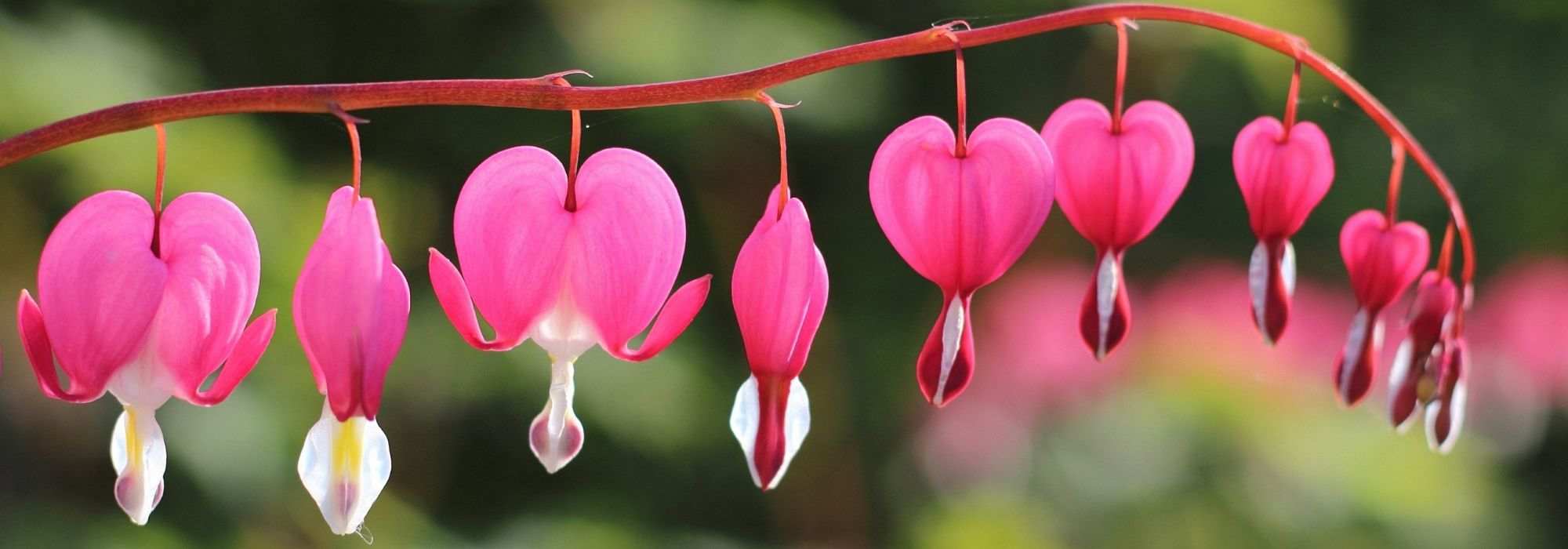
Choosing a Bleeding heart
Our buying guide
Contents
Worthy of a fairy-tale garden, the Bleeding Heart offers a beautiful, delicate spring flowering. Well-known for its heart-shaped flower, the graceful Dicentra is a semi-shade plant that requires light to bloom but fears the direct, scorching afternoon sun and cold winds. Once established, this hardy perennial does not like to be moved. It thrives in humus-bearing, cool, and light soils. Suffocating soils and stagnant moisture do not suit it. There are about twenty species of Dicentra, with the most famous being Dicentra spectabilis, the true pink Bleeding Heart.
To assist you, here are our tips for choosing your Bleeding Heart based on various characteristics: colour and appearance of the flowers and leaves, size, and use in the garden.
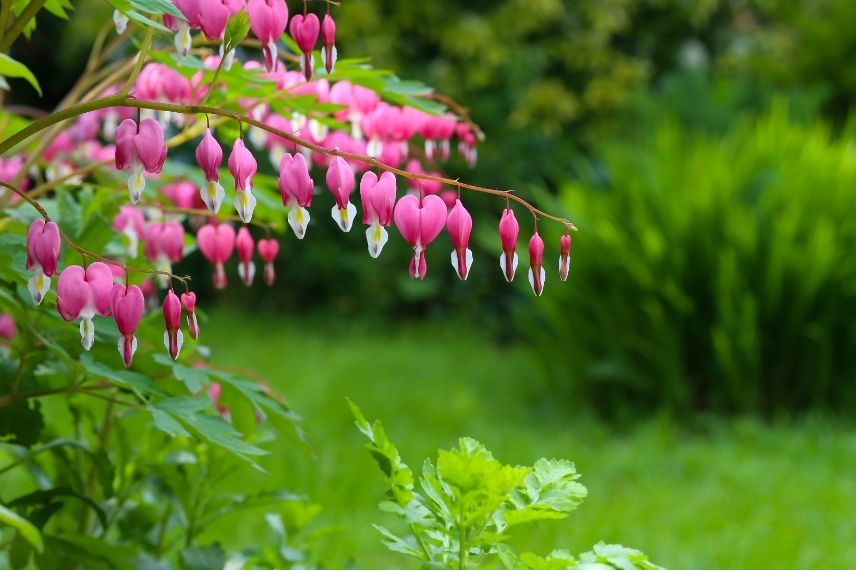
According to the colour of the flowers
Bleeding Hearts offer delicate pendulous flowers in white, pink, or red shades. The abundant flowering generally occurs from April to June, but can extend until September for certain varieties.
White-flowered Dicentras
These are undoubtedly the least known Dicentras. When we think of Bleeding Hearts, the image of a pink heart-shaped flower comes to mind. Yet, the species and varieties with white flowering are of admirable elegance:
- the cultivars ‘Alba’ and ‘White Gold’ are more vigorous than the typical species and produce pure white flowers;
- the variety ‘Ivory Hearts’ is adorned with ivory white hearts!
- the Dicentra formosa ‘Aurora’ offers cream white flowers with a hint of light green;
- the Dicentra cucullaria bears flowers with two erect white spurs tinged with yellow at the base.
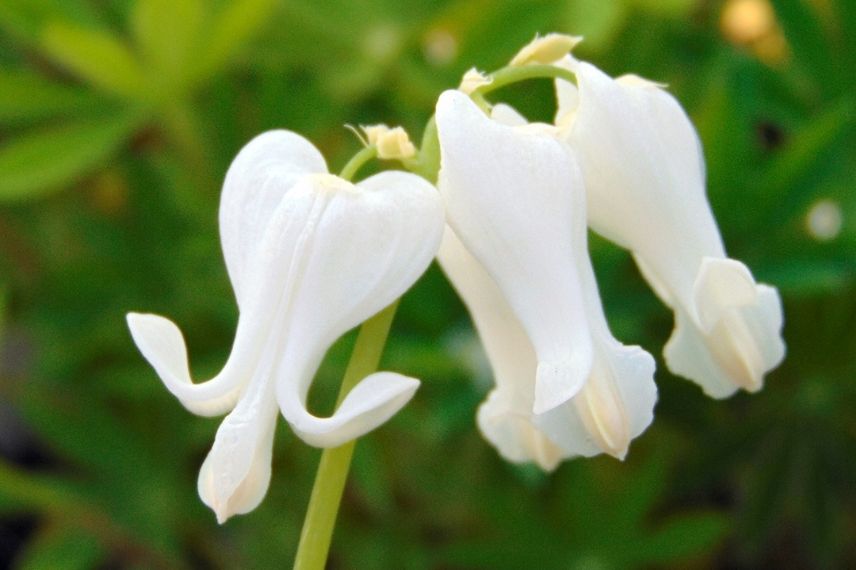
Dicentra ‘Ivory Hearts’
Pink-flowered Dicentras
These varieties with pink hearts find their place in romantic-inspired gardens and symbolise love:
- the Bleeding Heart Dicentra spectabilis bears magnificent soft pink flowers with a white tip, just like the variety ‘Goldheart’, which is slightly brighter;
- the Dicentra eximia ‘Stuart Boothman’ has more elongated pale pink flowers;
- In shades of purple-pink, we find Dicentra formosa ‘Luxuriant’ and Dicentra ‘King of Hearts’;
- the Dicentra formosa ‘Spring Gold’ features long hearts tinged with mauve pink.
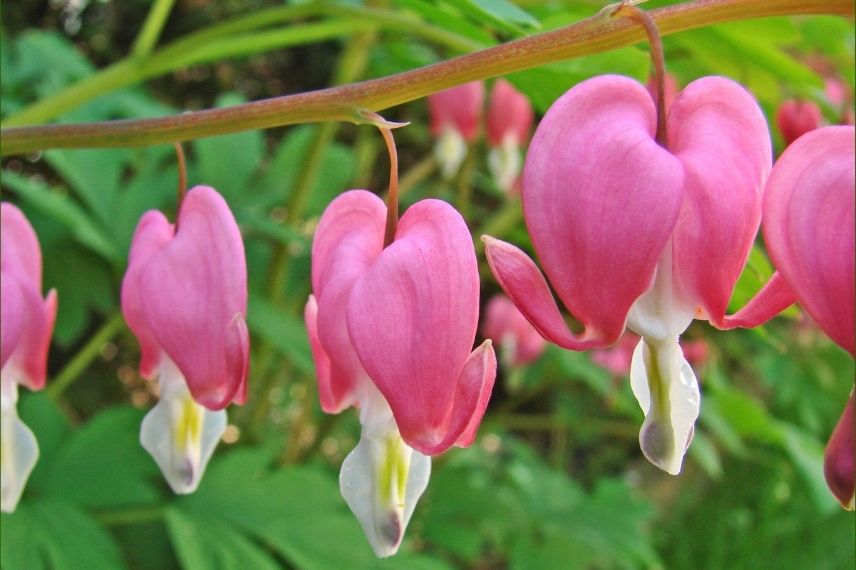
Dicentra spectabilis ‘Goldheart’ (photo Wikipedia)
Red-flowered Dicentras
Three varieties offer bright red flowers:
- the Dicentra formosa ‘Bacchanal’ is the darkest of the formosa genus and surprises us with its carmine red flowering;
- the variety ‘Burning Hearts’ showcases a long blood-red flowering from May to September;
- finally, the Dicentra spectabilis ‘Valentine’ displays a flowering of intense red hearts with a white tip.
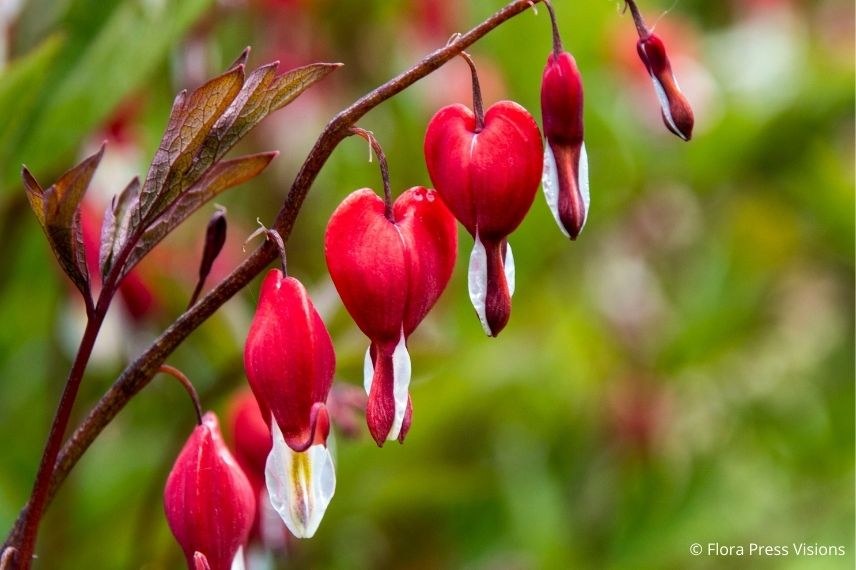
Dicentra spectabilis ‘Valentine’
According to the shape of the flowers
For most Dicentras, the flowers are heart-shaped, meaning in the shape of a heart. This is more or less well-rounded and notched depending on the variety. For example, in the varieties of Dicentra spectabilis, the flowers are very well-defined, the curved heart stands out perfectly and its spurs are perfectly turned back. This is also true for the varieties Dicentra ‘King of Hearts’ and ‘Burning Hearts’.
In contrast, the cultivar ‘Ivory Hearts’ and Dicentra formosa and eximia have more elongated and narrow flowers, resembling more bells than hearts.
There is also an exception: the Dicentra cucullaria bears flowers shaped like a donkey’s bonnet! For this one, two large triangular petals stand upright like ears, topped with two small yellow spurs. It is also known as the Hooded Dicentra or Dutchman’s Breeches.

Dicentra ‘Burning Hearts’, Dicentra formosa ‘Aurora’ and Dicentra cucullaria (photo A. Cannizzaro)
Discover other Dicentra - Bleeding Hearts
View all →Available in 0 sizes
Available in 3 sizes
Available in 3 sizes
Available in 3 sizes
Available in 3 sizes
Available in 2 sizes
Available in 1 sizes
Available in 0 sizes
Available in 1 sizes
Available in 1 sizes
According to the colour of the foliage
Bleeding Hearts offer us three foliage colours: green, grey, and yellow. Shades of varying darkness, bluish, silvery, and golden emerge to make the Dicentra even more decorative. The arching flower stems bearing the leaves are often light green but can also take on red or purplish pink hues depending on the varieties.
Green-leaved Dicentras
- the Dicentra spectabilis and its white variety ‘Alba’ are dressed in light green;
- for Dicentra formosa ‘Bacchanal’ and Dicentra cucullaria, bluish green predominates;
- the beautiful bright green of Dicentra formosa ‘Luxuriant’ and ‘Aurora’ brightens up gardens;
- finally, the variety ‘Valentine’ produces young leaves in purple and copper tones that turn green when mature.
Silver-grey leaved Dicentras
- The gentle Dicentra eximia ‘Stuart Boothman’ flourishes in greyish green tones, producing pale pink flowers;
- In a white garden, Dicentra ‘Ivory Hearts’ stands out with its silver leaves and white flowering;
- For a beautiful contrast between pink-red flowers and silver-grey leaves, Dicentra ‘Burning Hearts’ and ‘King of Hearts’ are perfect choices.
Golden-yellow leaved Dicentras
- Dicentra formosa ‘Spring Gold’ is surprising with its golden foliage in spring, turning green in autumn;
- The very bright varieties ‘White Gold’ and ‘Goldheart’ with golden yellow foliage fill gardens with white flowers for one and pink for the other.

Dicentra spectabilis ‘Alba’, Dicentra ‘Burning Hearts’ and spectabilis ‘White Gold’ (photo Guido)
According to the shape of the foliage
Perennial with deciduous leaves, Dicentra forms bushy clumps that disappear after flowering. Preferring shaded locations, its foliage is classified into two types of lamina:
Lobed-leaved Dicentras
Varieties of Dicentra spectabilis and Dicentra formosa have lobed leaves that are light and airy (in other words, divided). Their habit is airy and spreading, giving them a lovely elegance. The main colours are green and golden yellow.
Finely cut-leaved Dicentras
With a completely different style reminiscent of chervil, the Bleeding Hearts with finely cut leaves form smaller, more compact clumps than those with lobed foliage. Notable examples include Dicentra eximia ‘Stuart Boothman’, Dicentra ‘Ivory Hearts’, ‘King of Hearts’, and ‘Burning Hearts’ with silver-grey colouration.
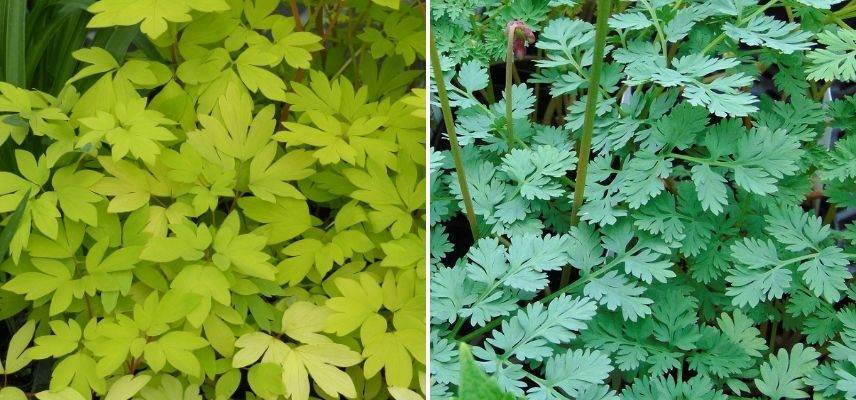
Dicentra spectabilis ‘Goldheart’ and Dicentra ‘King of Hearts’
According to the size
There are three categories of size:
- Firstly, we can mention Dicentra eximia ‘Stuart Boothman’, Dicentra formosa ‘Aurora’ and Dicentra cucullaria, which are among the smallest. Indeed, they do not exceed 25 cm in height and fit well in small spaces and corners;
- Next, there are many species and varieties that reach around thirty centimetres in height when mature. Dicentra ‘King of Hearts’, ‘Ivory Hearts’ and Dicentra spectabilis ‘Valentine’ form homogeneous clumps that are as wide as they are tall. Dicentra formosa ‘Luxuriant’, ‘Bacchanal’ and ‘Spring Gold’ are more spreading. The cultivar ‘Burning Hearts’ is slightly larger and can reach up to 40 cm in height;
- Finally, Dicentra spectabilis and its varieties ‘Alba’, ‘White Gold’ and ‘Goldheart’ are the tallest, reaching heights of 50 to 60 cm.
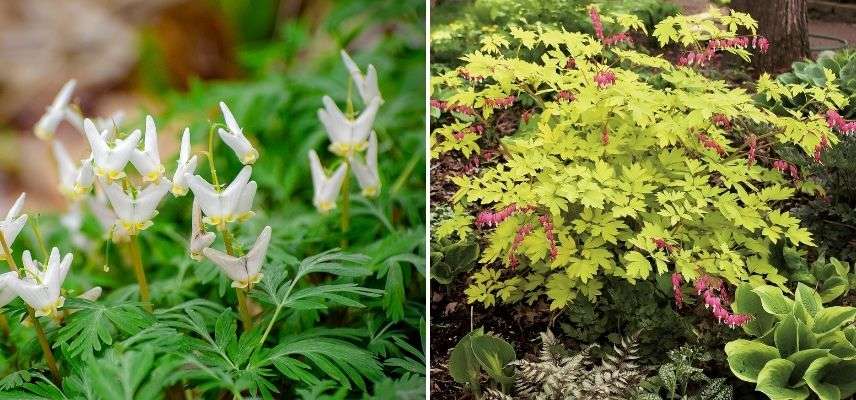
The small Dicentra cucullaria and the large Dicentra spectabilis ‘Goldheart’ (photo Wikipedia)
According to the uses
At the heart of a border, it is Dicentra spectabilis and its larger varieties that should be favoured, such as ‘Alba’, ‘White Gold’ and ‘Goldheart’. They integrate beautifully into romantic English cottage gardens. With a deciduous foliage, the Bleeding Heart disappears from July onwards and throughout the winter period. Avoid planting it in groups and place it alongside perennials with evergreen foliage to fill the empty spaces.
At the edge of a path, choose a medium-sized variety, such as Dicentra spectabilis ‘Valentine’ or formosa ‘Spring Gold’ with its bright light foliage.
To flower a balcony, Dicentra formosa ‘Bacchanal’ with its magnificent deep red flowers finds its place as a solitary in a pot. The small cultivar ‘Valentine’ is also suitable for pot planting.
Among the ground cover species, we find Dicentra eximia ‘Stuart Boothman’, Dicentra formosa ‘Luxuriant’ and Dicentra ‘King of Hearts’, ideal for creating a flowering carpet under trees. They spread easily with their rhizomes that weave between nearby plants. The Bleeding Heart is not afraid of root competition!
Create a shady rockery or an enchanting woodland with the Dicentra cucullaria which delights dark areas with its amusing white flowers.
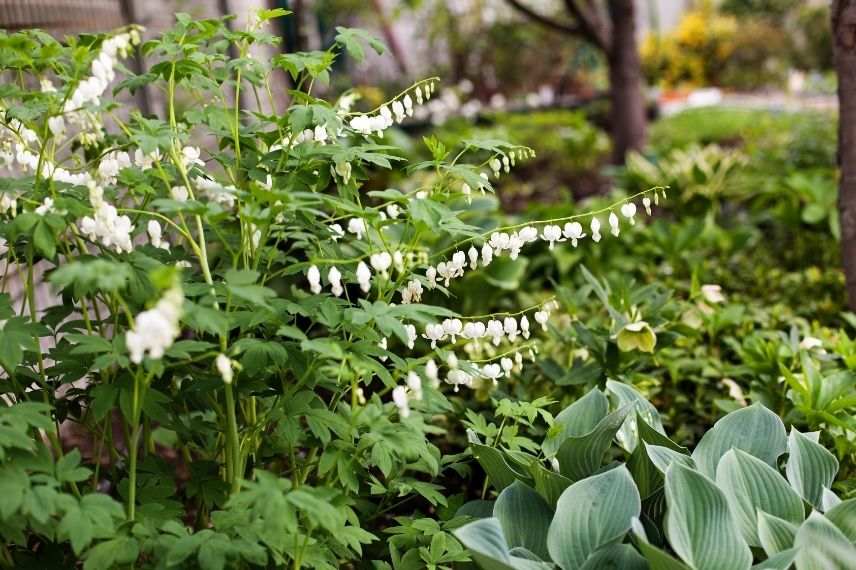
White Bleeding Heart in woodland
To find out more
Also check out our complete file: Bleeding Heart: planting, growing and companion planting
- Subscribe!
- Contents
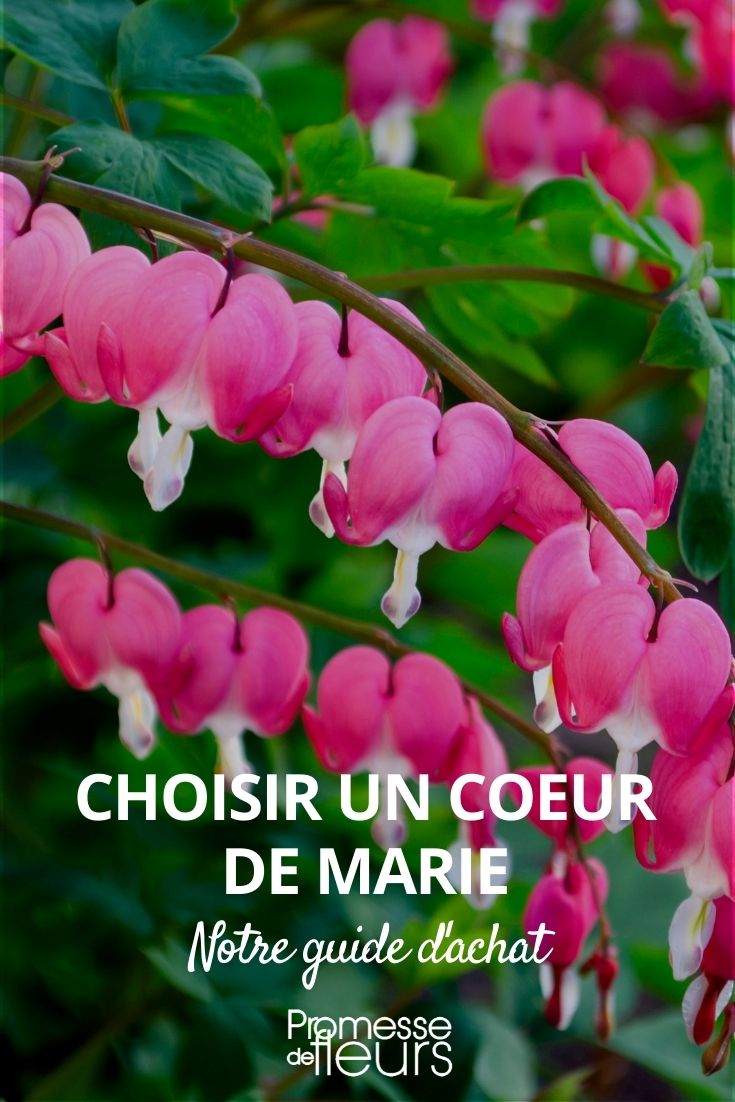































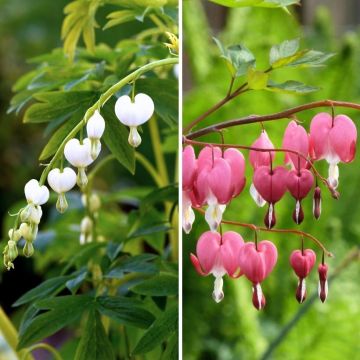
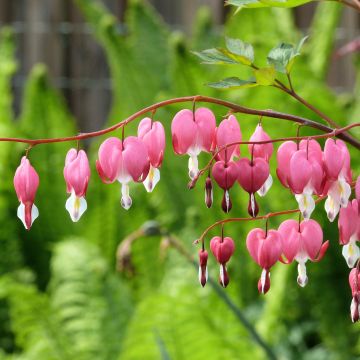
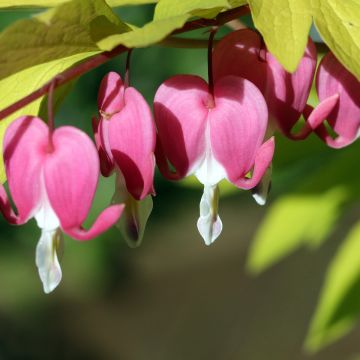
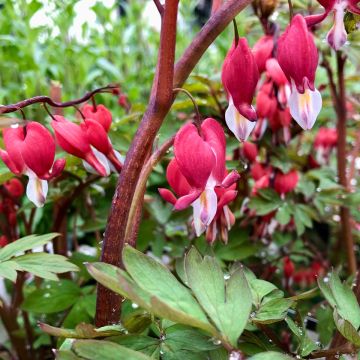
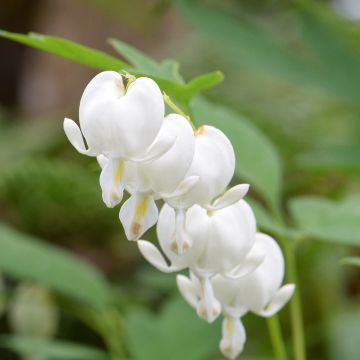
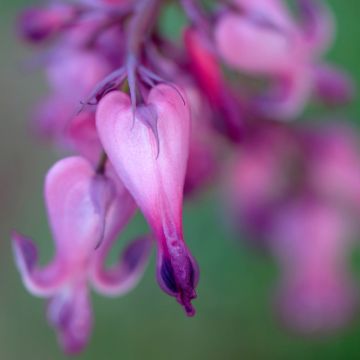
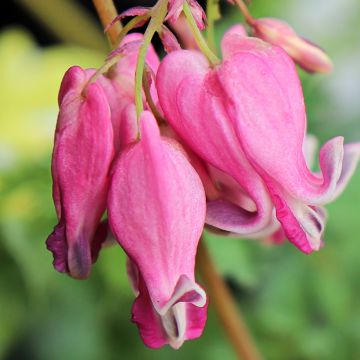
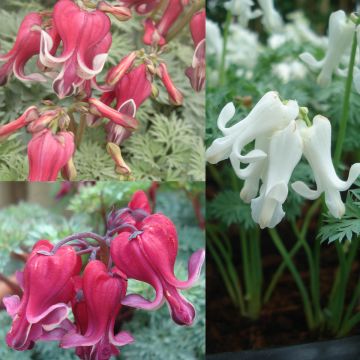
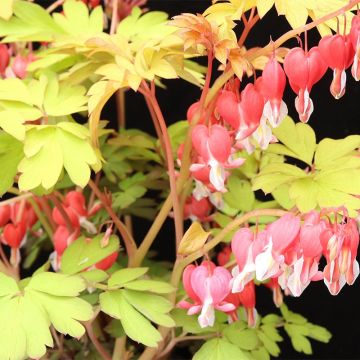
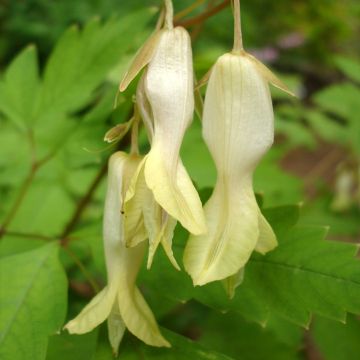
Comments